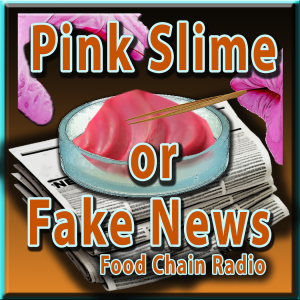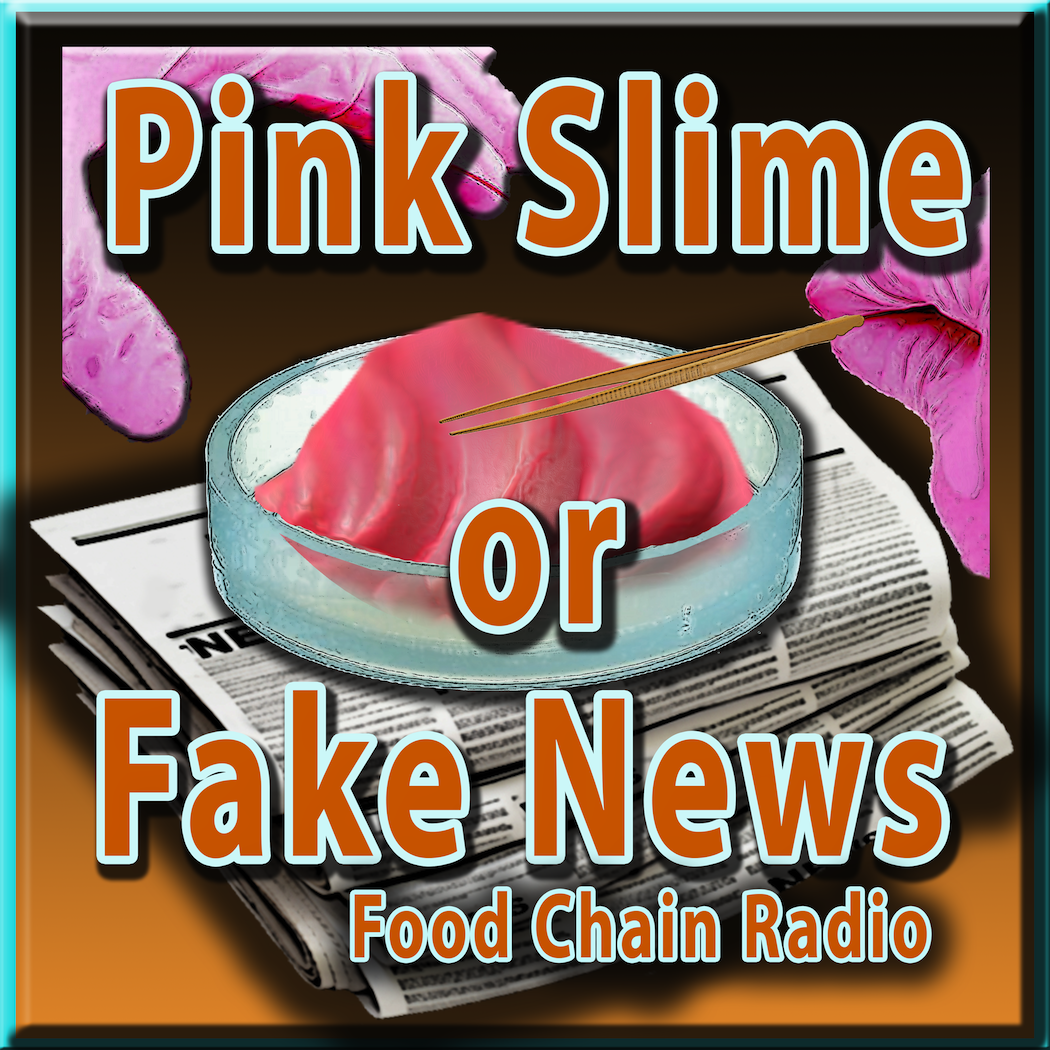
Temple Grandin
June 23, 2017
Farm Stories
July 7, 2017Food Chain Radio Show #1109
Michael Olson, Author & Urban Farming Agriculturalist
Pink Slime or Fake News
Guests: Dan Gainor, VP Media Research Center & Attorney James Wagstaffe, Kerr & Wagstaffe
There is a difference in hamburgers: ground chuck, round and sirloin burgers are made of meat taken from a specific body part. Ground beef can be all the leftovers ground up, so long as it does not contain more than 27% fat.

Michael Olson Food Chain Radio – Was the textured beef reported by ABC News “pink slime” or was the reporting “fake news”?
When their ground beef contained too much fat, burger makers called on Beef Products of South Dakota, which used heat and centrifuges to spin the fat off meat scraps, leaving only a lean, finely textured beef product (LFTB), that when treated with antibacterial agents, was good to go.
By adding the LFBT to their ground beef, those who sold cheap burgers were able to sell more burgers for less cost. And they did… 70% of the ground beef in the U.S., was believed to contain lean, finely textured beef… And all was well, until…
2012, when ABC News broadcast an 11-segment feature in which the news organization essentially repositioned the lean finely texture beef product into… “pink slime”.
Consequent to the ABC News report, Beef Products business collapsed… hundreds of millions of dollars were lost, jobs were eradicated in three states… and the company went belly up.
So Beef Products brought a defamation suit against the Disney-owned ABC News for $1.9 billion, which could have been raised to about six billion by virtue of South Dakota defamation laws.
After three months of fighting it out in court, ABC News capitulated and agreed to an out of court settlement for no-one-is-saying how much!
This pink slime food fight leads us to ask…
Leave a comment below: Was the textured beef reported by ABC News “pink slime” or was the reporting “fake news”?





1 Comment
Offal is profit enemy or ally depending on whether it goes into the tank or finds its way to the grocers freezer case. At the heart of the matter lies packer profits and how far consumers will allow packers and their regulators at USDA to go in search of that. BPI takes rendering to a whole new level. But at some point consumers must reasonably expect that dollar quest to stop at something reasonable. They must also expect packers and processors to slip a little something extra into the sausage when no one is looking.